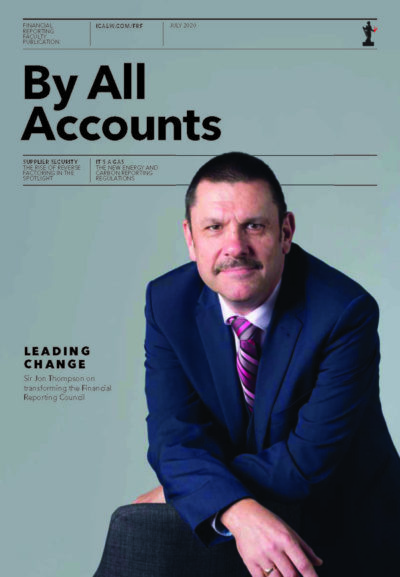General
ICAEW magazine features Mei Ashelford consulting on the practical approach to s172 reporting.

With this reporting season well underway, there has been a huge amount of commentary on how companies have reported against their s172 duty but very little about how to go about doing so practically.
The annual reports from this season’s first reporters vary significantly in format, detail, length and location; some are fuller, standalone statements whilst some are simple tables with cross-references to other parts of the report. For me, good quality reporting that is decision-useful and insightful must be underpinned by good quality content supported by robust evidence; ultimately it doesn’t matter what form the s172 statement takes if the evidence to support it is poor. Consequently, companies should prioritise evidence gathering first before determining what form their s172 statement should take.
In my article published in the July 2020 edition of By All Accounts, entitled ‘Section 172(1) reporting – a co-ordinated effort’, I set out my practical four-step approach.

1. Understand the s172 duty
It is critical that you understand what the s172 duty is about. It is not just about stakeholder engagement; it is much wider than this and unfortunately many of the early reporters have fallen into this trap.
Under s172, directors are duty bound to have regard to the following considerations when promoting the success of the company:
- The likely consequences of any decision in the long term
- The interests of employees
- The need to foster business relationships with suppliers, customers and others
- The company’s impact on the community and environment
- The desirability of the company maintaining a reputation for high standards of business conduct; and
- The need to act fairly as between members.
Stakeholder investment is only referenced in parts (b), (c) and (f). For me, s172 can be summarised under three themes – engagement, impact and behaviour– and for reporting to be meaningful, evidence must be provided that encompasses these three themes.
2. Gather evidence
Gathering evidence on engagement, impact and behaviour from around the business to support your s172 statement is a must, and happily this exercise can be undertaken ahead of the year end rush.
Engagement
Who are your key stakeholders? How do you engage with them, both informally and formally? What happens to the feedback? What issues were raised during the year? How did you respond?
Impact
What impact, both quantitative and qualitative, do you have on your stakeholders, society at large and the environment? How do you manage your impact? How do you measure it? What were your priorities for this year? How did you do? What are your priorities for next year?
Behaviour
What is your culture and associated behaviours and values? How is this aligned with your strategy and business model? How do you monitor culture? What controls, policies and processes are in place?
3. Identify what is material
Having too much information can be overwhelming, and not all information gathered should be included in the annual report. A sifting exercise is required to identify information that is of material interest to shareholders.
The Guidance on the Strategic Report is clear that issues relevant to other stakeholders should be included where they have a material influence on the performance and future prospects of the business, and thus are of material interest to shareholders. For example, facilitating summer internships for disadvantaged school leavers in isolation is unlikely to be material to shareholders as its effect on the overall performance or future prospects of the business will be negligible, however if it is part of a much wider social impact strategy, it might be.
Once this sifting exercise has been completed, the information you are left with will be the content and evidence that will inform the narrative and design of your s172 statement and supporting content.
4. Develop a detailed structure and content plan
The strategic report should have a clear narrative running through it – what we call the ‘golden thread’. In addition, the strategic and governance reports should dovetail as the s172 duty crosses over between the two.
This is where we can really help our clients bring their story to life in a clear and coherent way. We can work with you to create a detailed structure and content plan that knits together what your business is about, your key messages, your ambitions for your annual report and the rich stories and evidence to support your s172 statement, all whilst maintaining regulatory compliance and pushing for best practice.
If you would like to discuss how we can help you with your corporate governance and reporting please contact: will@gather.london
If you would like to find out more about the new corporate governance and reporting reforms, you can download my suite of Reporting Intelligence white papers at www.gather.london/insights.
The full version of my article on s172 reporting is available to ICAEW Financial Reporting Faculty members www.icaew.com/byallaccounts